Instances
In this view, you can see all users and sites, and teams synchronized (imported) from the defined organization (Microsoft 365)
Click Synchronize button on cloud service providers or use account auto-synchronization to import users or sites and teams from Microsoft 365 organization.
Switch to the Users, Grooups, Sites, or Teams view to see only selected instances.
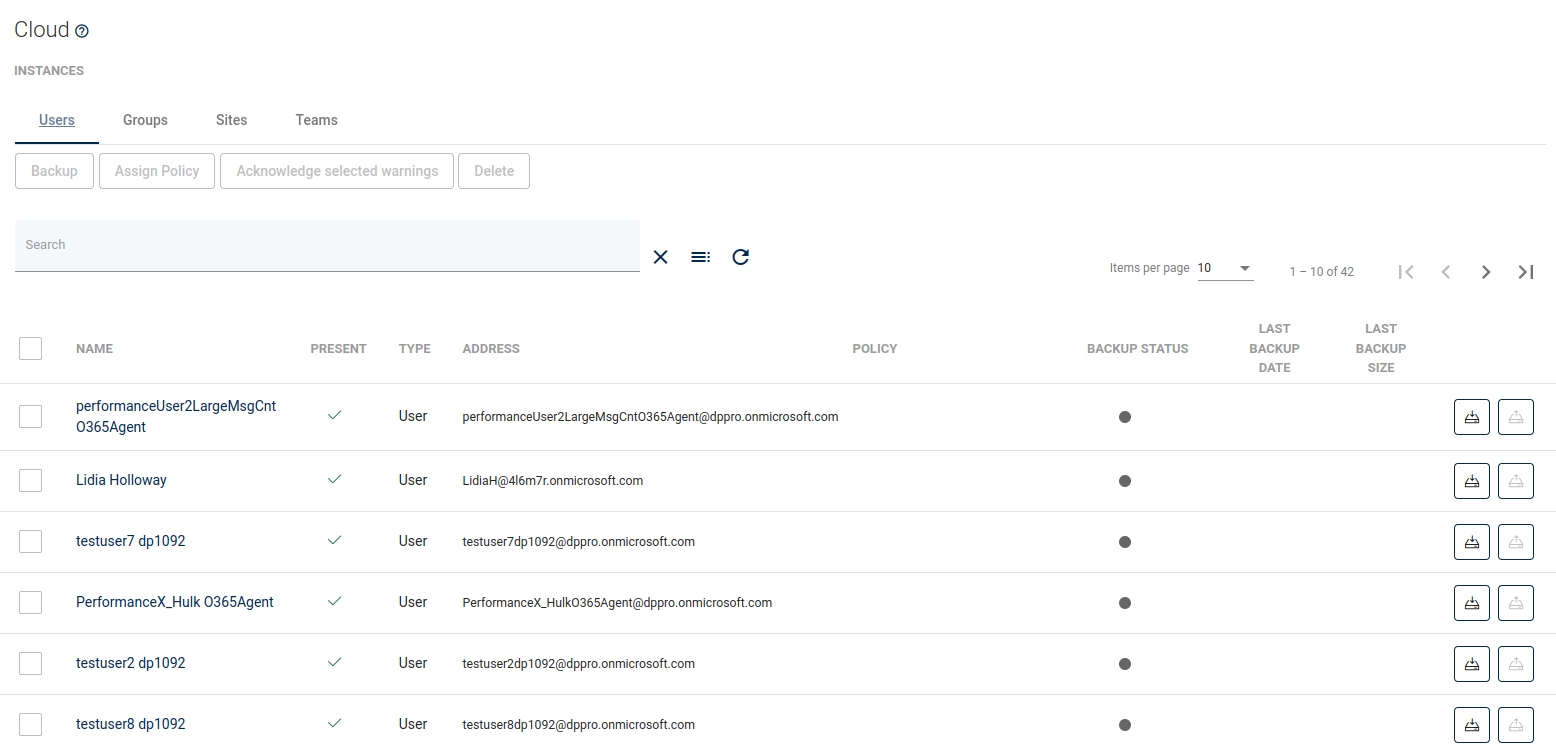
You can do the following activities on the protected entities (users or sites):
Backup - to start a backup process for the selected entities
Delete - to delete selected entities
Restore - to restore entities data
You can go into User/Group/Site/Teams to see the details page. As you can see, the window has been divided into several areas:
Summary

At the top, you can see summarized pieces of information about the selected entity, such as:
the ID of the entity object into Storware Backup & Recovery
to which service provider belongs
which node is assign to backup this entity
short information about the last backup actions
whether the entity has tags or policies assigned to it
You can also use several function buttons:
refresh
back to list
change view
backup
restore
delete
Backup/Restore Statistics
Daily activity

First, you'll see a daily summary of the backup and restore operations for the last month. This view is called "Daily Summary" and is the default view. You can switch the report between four views.
Backup Size
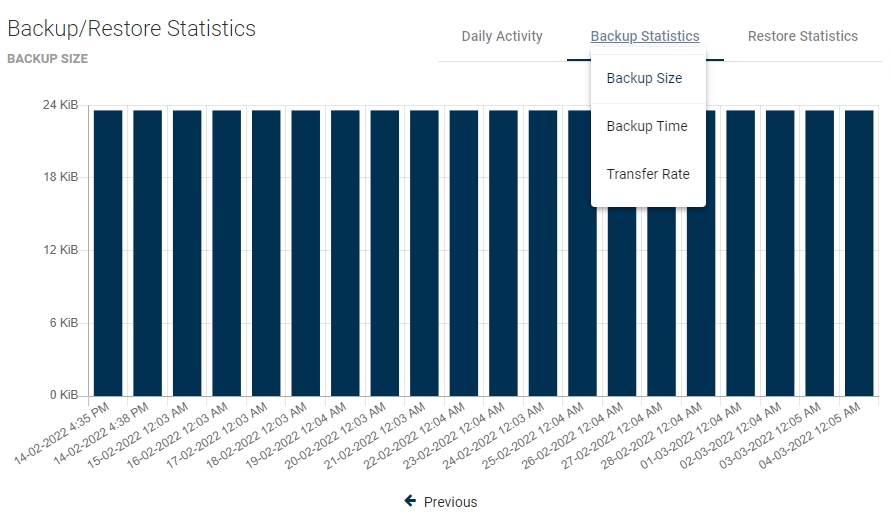
This view shows separate columns for each backup made to the virtual machine. Thanks to this, you can easily determine what data increase.
Backup Time
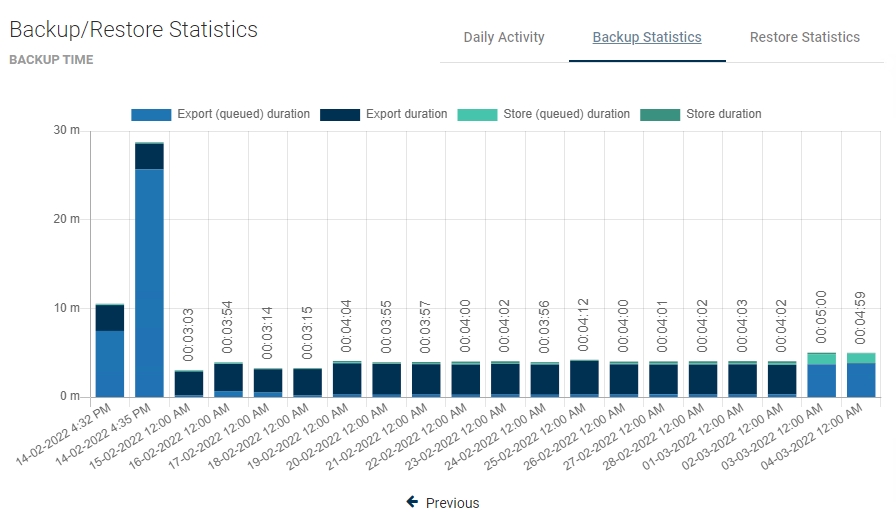
A very useful report. It allows you to determine the required window length for backups or, based on the time of individual phases, it is easy to deduce the cause of slow backups.
Transfer Rate
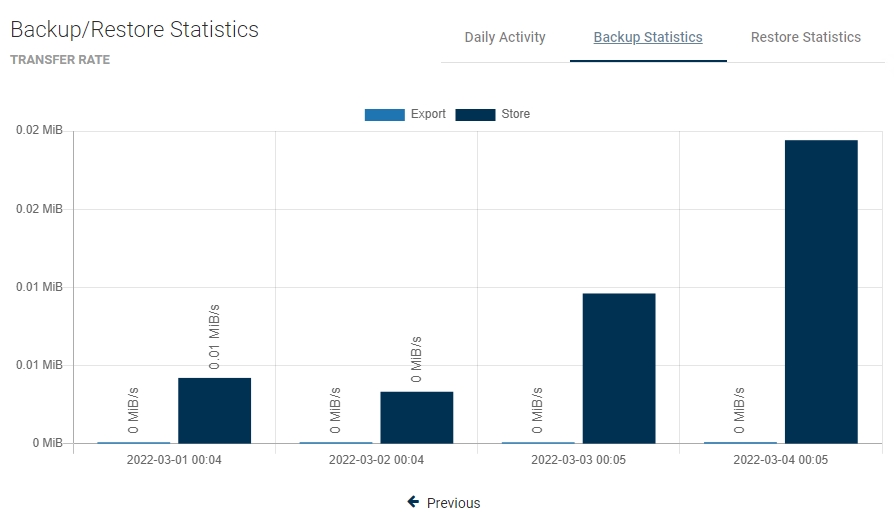
One of the latest reports, now you can easily see how fast data transfer is.
Restore Time
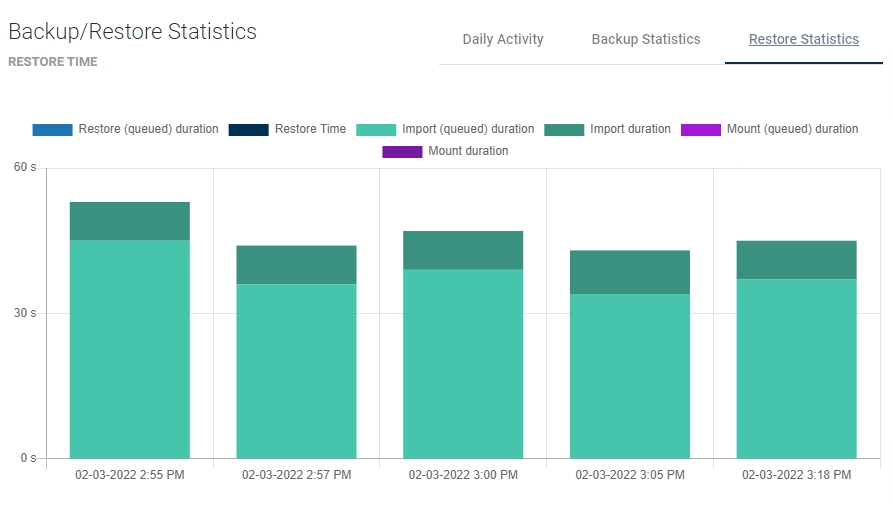
A view with the same properties as "Backup Time". It allows us to estimate how long it will take to restore the machine in the event of a failure.
Transfer Rate
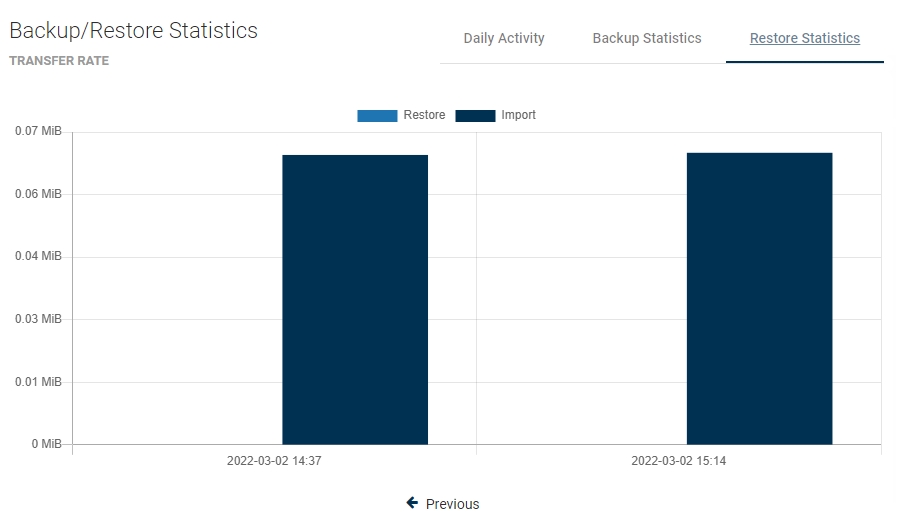
As in the previous case, we also have the transfer speed for the restore job.
Events Calendar
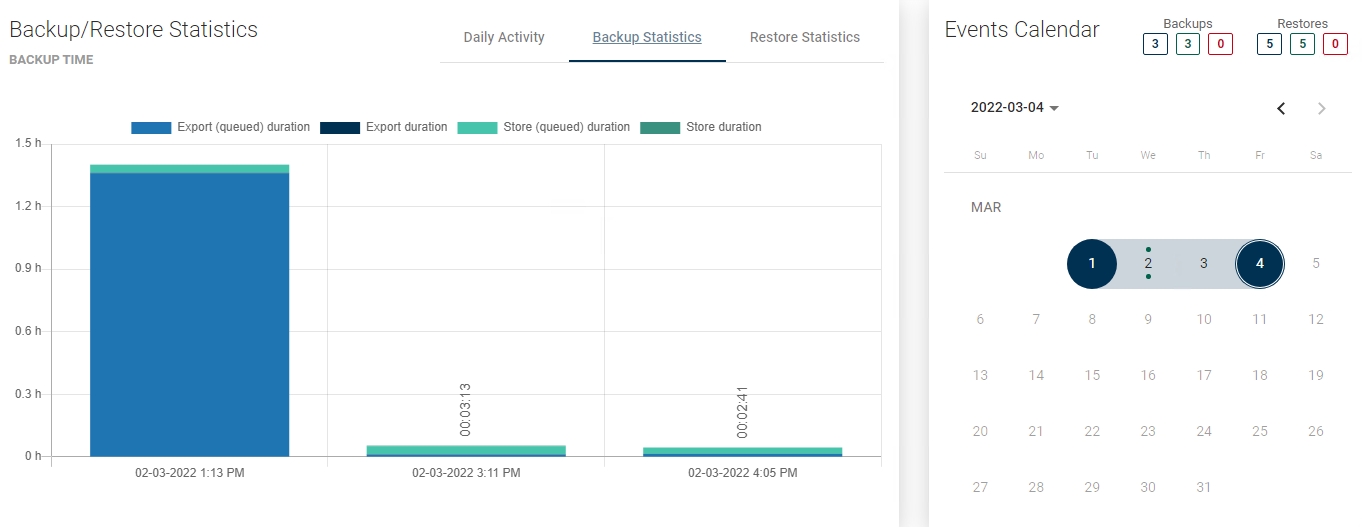
The calendar extends the possibilities of adjacent statistics. It allows you to neatly define the range of days you want to see, additionally makes a quick summary of the number of backups and restores (top right corner). Blue - the sum of all backups, Green - the sum of successes, Red - the sum of failures.
Bottom menu
In the bottom menu, you can find a large number of tabs, each of which will present different information or will allow you to restore one or more objects from the selected user, site, team.
Backup History
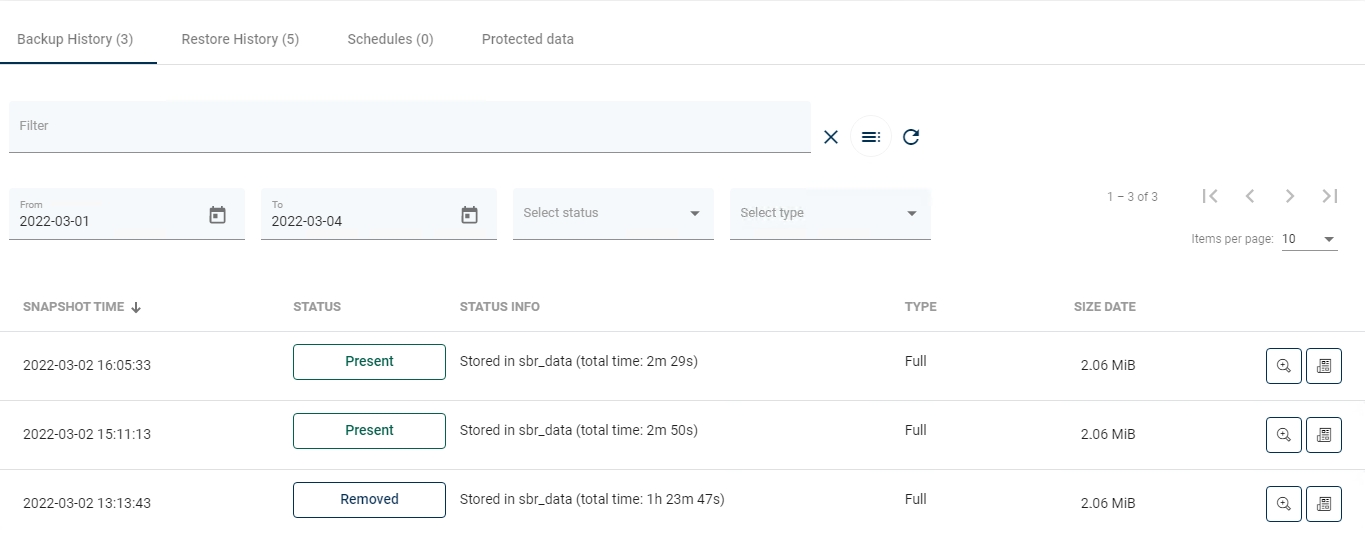
This tab shows information about all backups made, as well as information about failed, removed (because of retention), or currently executing backups.
Restore History
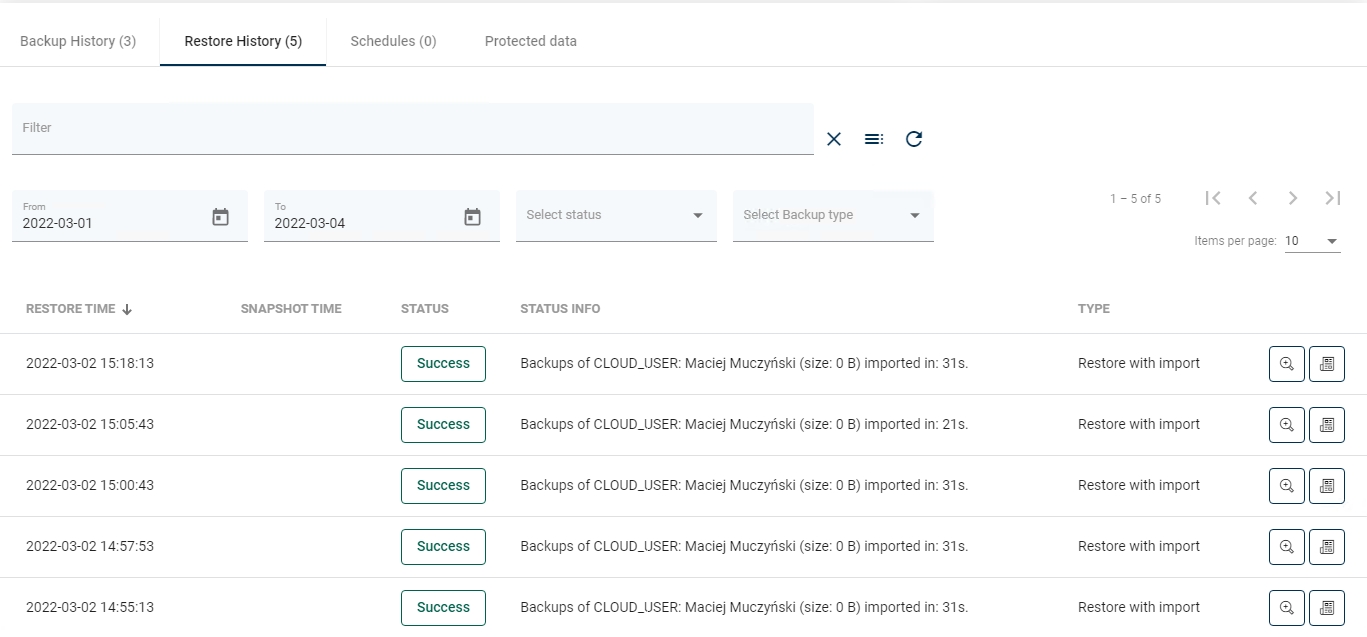
This tab is similar to "Backup History". This is a list with basic information about restores performed. When you open the details of the selected restore, you will see more detailed information.
Schedules

In this tab, you can see all the schedules assigned to this entity.
Protected data
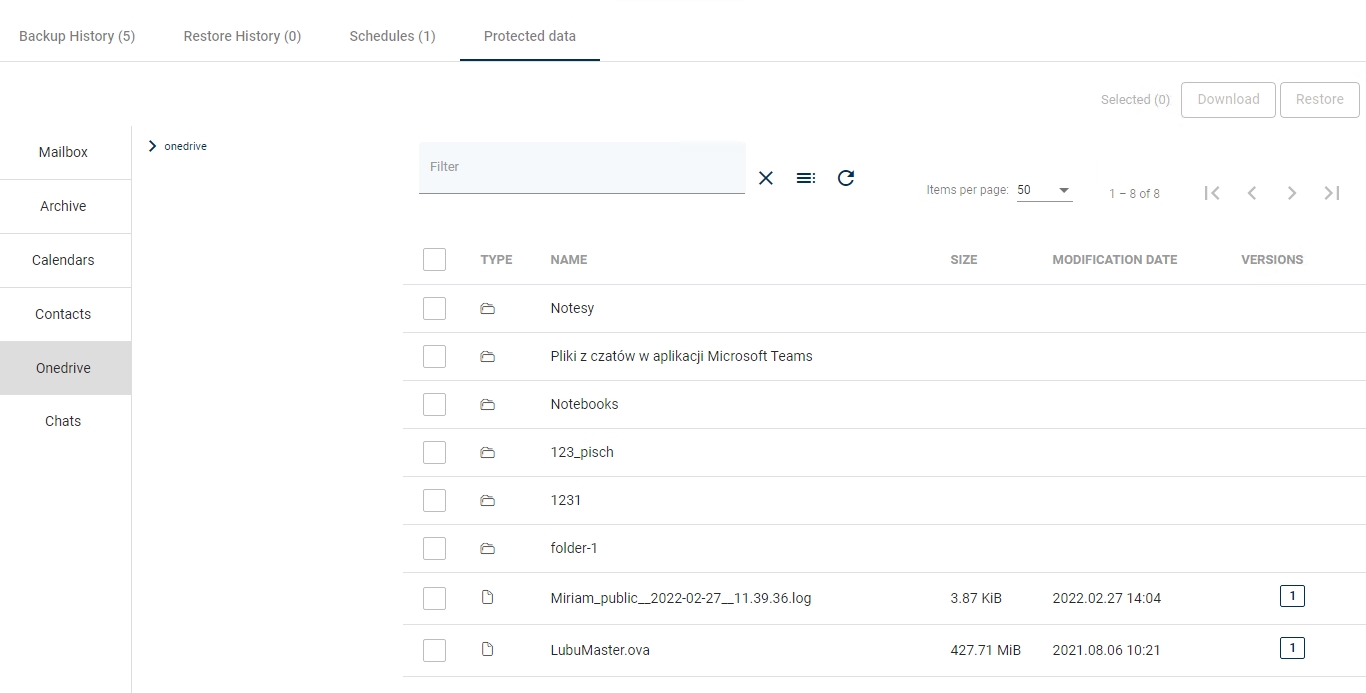
In this tab, you can see all backup data which you can select for restore or download.
You can always use the filters to move back in time to select the exact moment from the calendar and restore or download data.
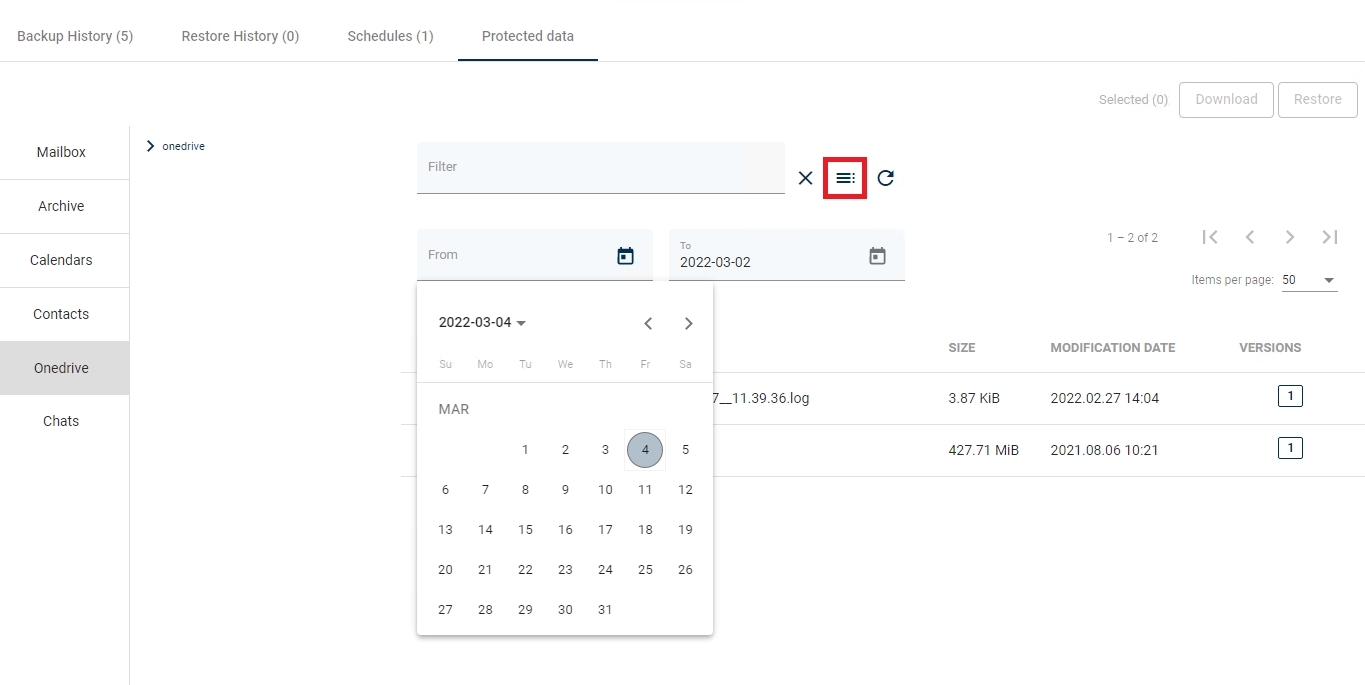
Export to PST
This feature allow you to download data and save it as PST file. Currently available only for Mailboxes.
Requirements
Machine with Windows OS
Microsoft Outlook 64-bit installed on mentioned machine
You need to enable WinRM and add firewall rules on the Windows machine. You can use ready scripts to do it. You can find these scripts in /opt/vprotect/ directory:
scripts/winrm_firewall_windows.ps1 - copy from node to target Windows host and execute
scripts/winrm.ps1 - copy from node to target Windows host and execute
Next, install CLOUD2PST Converter application. It is available in Storware repository.
Exporting to PST
Go to Nodes -> Node Configurations and edit existing node configuration. Click on Cloud Agent tab and type access credentials to your Windows machine which will be used to generate PST.
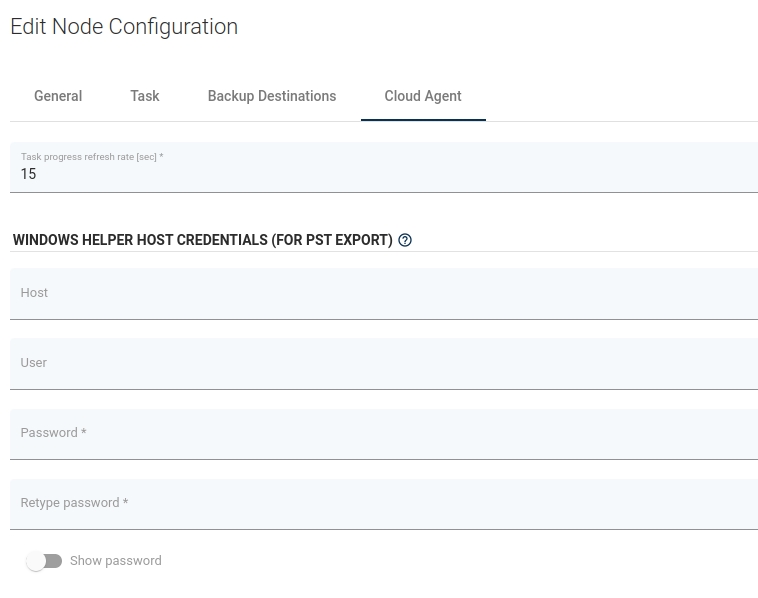
In the Protected data tab of the selected M365 user, click on item you want to export and then click Export to PST button. The download task will be created.
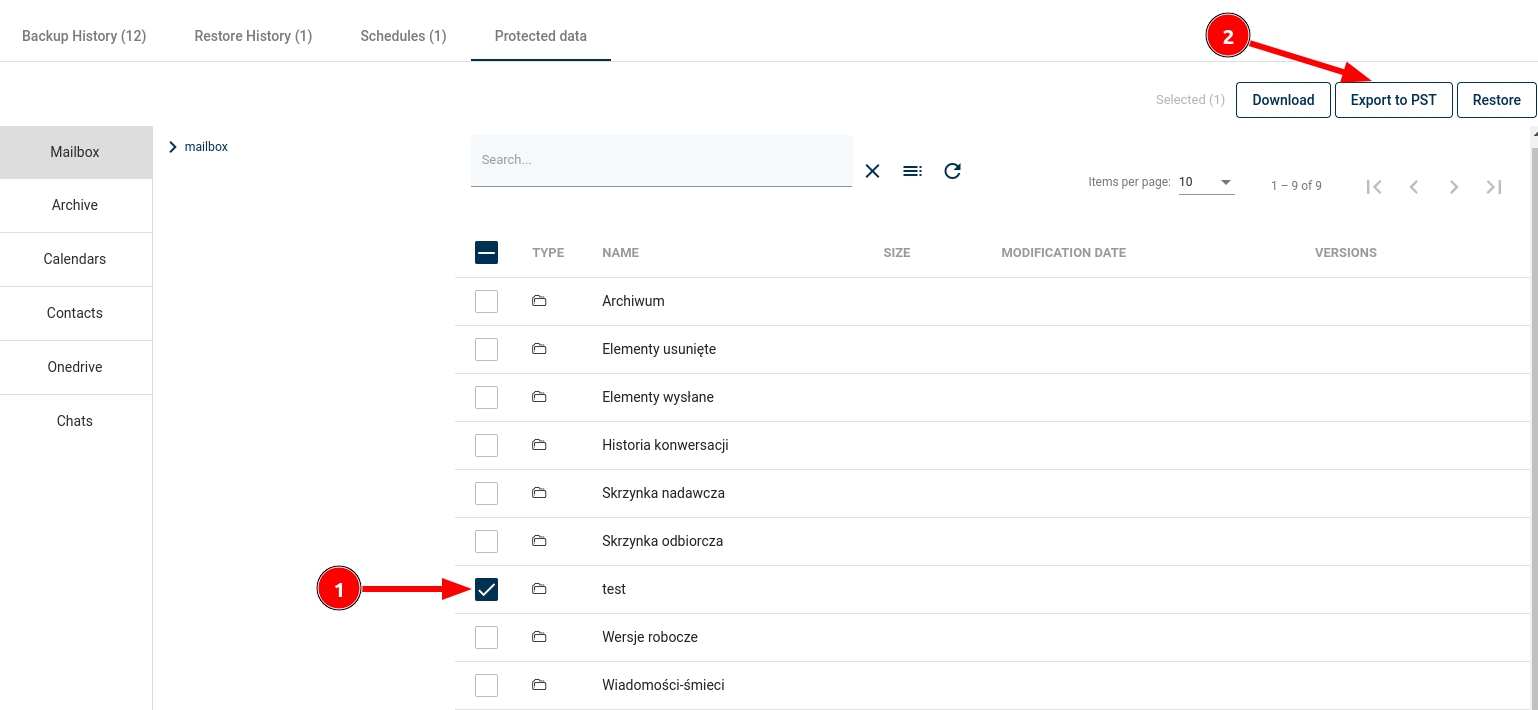
After download task is complete, go to Cloud -> Download. Here, click on the Download button to download your exported PST file.
